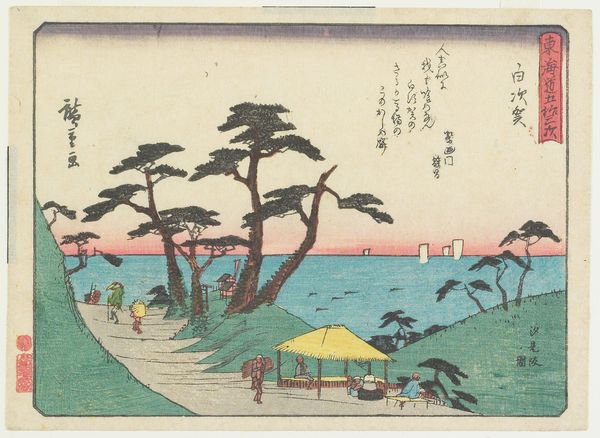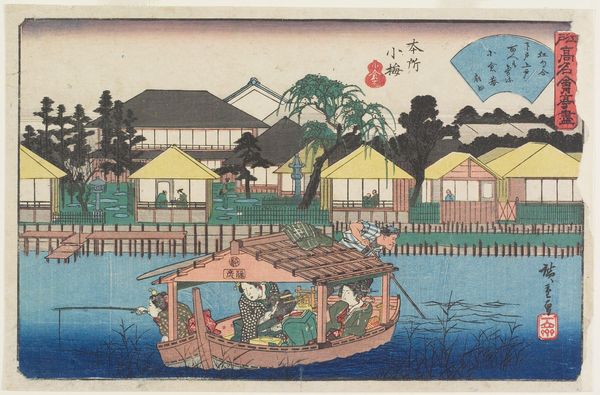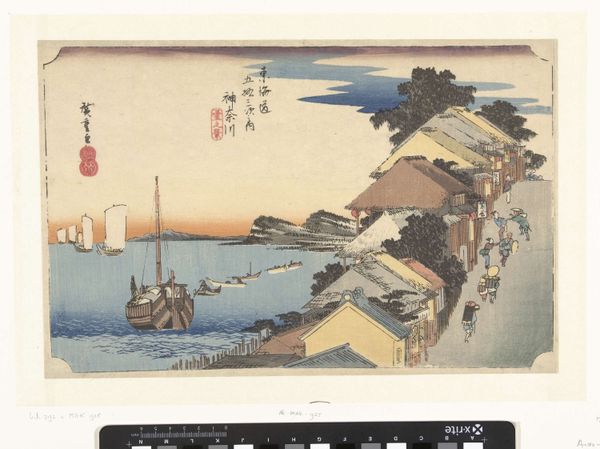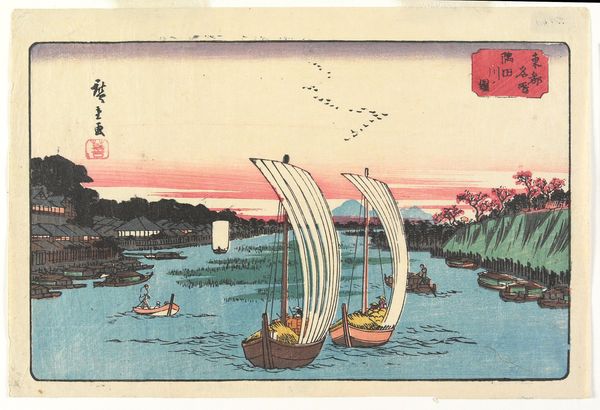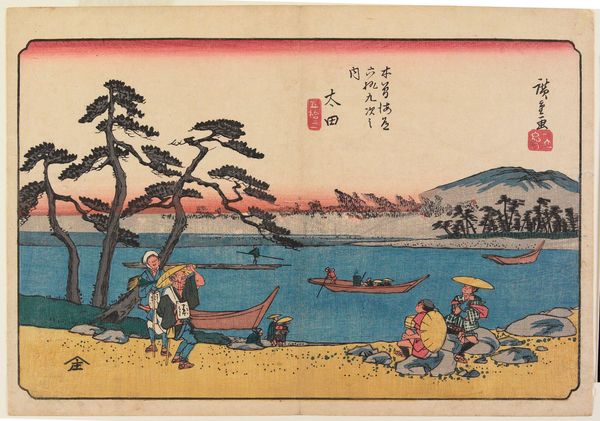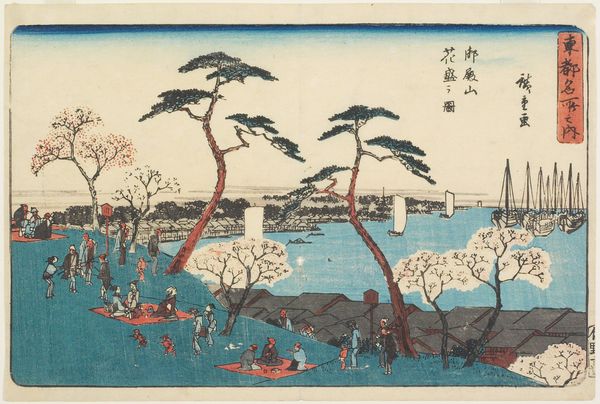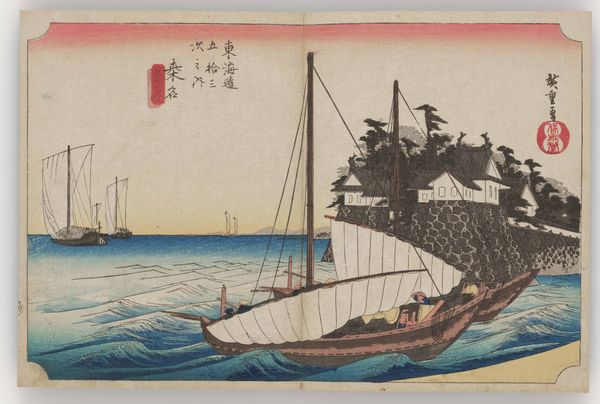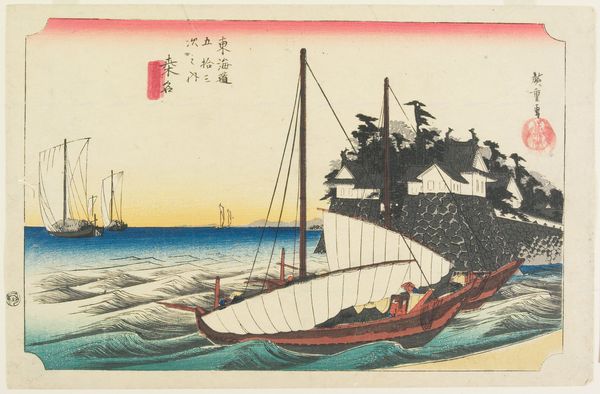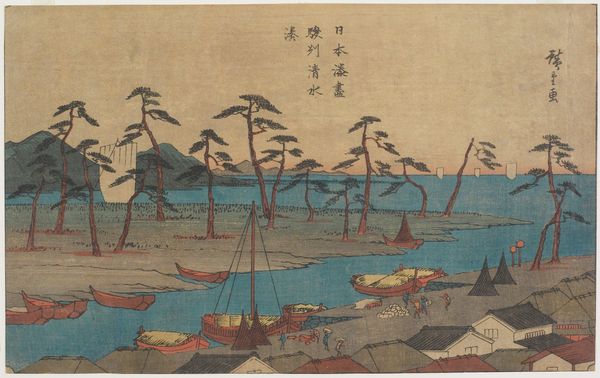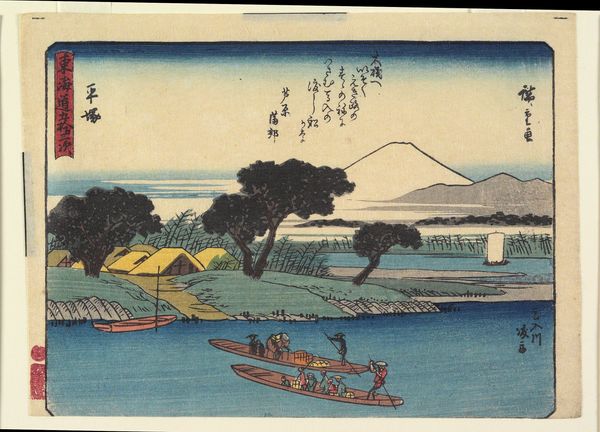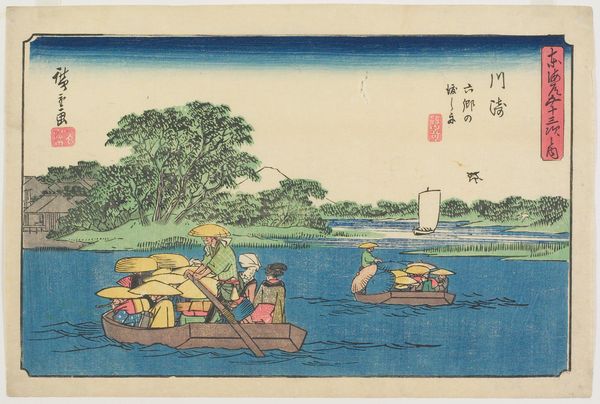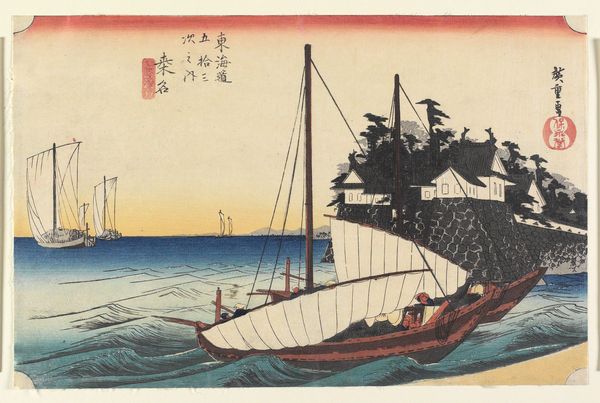
Scattered Pine Trees by the Tone River, from the series The Road to Narita in Shimosa Province Possibly 1919
0:00
0:00
#
childish illustration
#
water colours
#
asian-art
#
handmade artwork painting
#
personal sketchbook
#
coloured pencil
#
watercolour bleed
#
watercolour illustration
#
cartoon carciture
#
sketchbook art
#
watercolor
Copyright: Public Domain: Artvee
Curator: Looking at Utagawa Hiroshige's woodblock print, possibly from 1919, titled "Scattered Pine Trees by the Tone River, from the series The Road to Narita in Shimosa Province," one is immediately struck by its tranquil beauty. Editor: Tranquil indeed, but I am especially drawn to how small we're made to feel. Those vast, empty sails contrasted with the busy little boats create a striking tension, one that amplifies the laborers' social vulnerability to the sheer forces of nature and market volatility. Curator: Precisely! These images, these sailboats specifically, carry potent symbolic weight throughout Japanese art and beyond, often representing journeys and the ever-changing tides of fortune. But in this image, the oversized sails create a dramatic contrast with the small, populated vessels below. Are we to believe this illustrates an era when human lives were simply smaller within the great economic schemes? Editor: It's tempting to say yes, though, isn't it, just as the fishermen and laborers who once filled these small crafts found themselves at the mercy of environmental factors—dependent on safe passage on that deceptively calm looking Tone River, vulnerable to weather? I read into this the precarity of labor, of class, and their connection to the feminine sphere...a sort of ecofeminist angle of observation, maybe. Curator: That interpretation is deeply resonant, especially given the ways labor is coded today along lines of race, gender, and access to safe environments. How are women, immigrants, people of color disproportionately subject to these volatile changes? We might extend that reading to incorporate climate refugees of today. Editor: That's a beautiful idea. Those scattered pines in the title add another layer, suggesting a delicate yet resilient landscape subject to these same cultural shifts. They recall older symbolic forms but find new resonance within an industrializing society, suggesting a culture both embracing and perhaps anxious about the pace of change. Curator: So, Hiroshige gives us a slice of life, but infused with potent symbolism. His landscapes were never purely objective depictions. They serve as cultural mirrors that reflect our social anxieties and resilience through material shifts and industrial eras. Editor: An anxious beauty then. Now, where should we venture next? The Dutch Masters, perhaps?
Comments
No comments
Be the first to comment and join the conversation on the ultimate creative platform.


